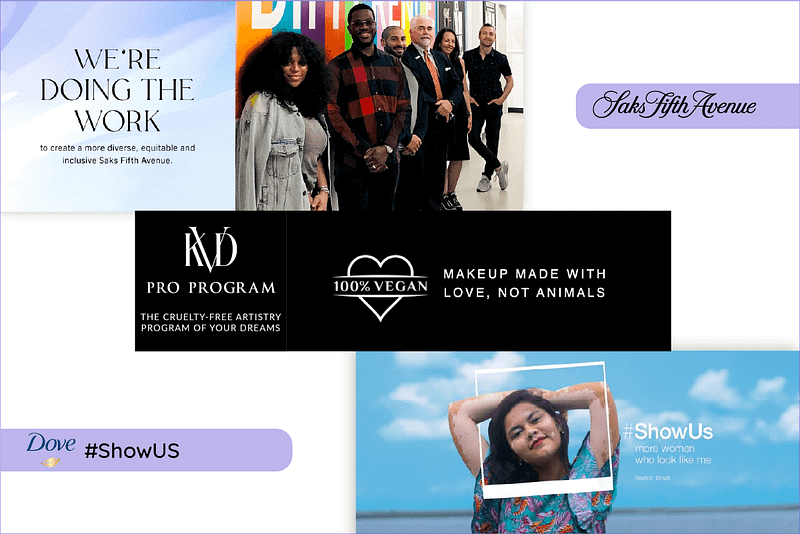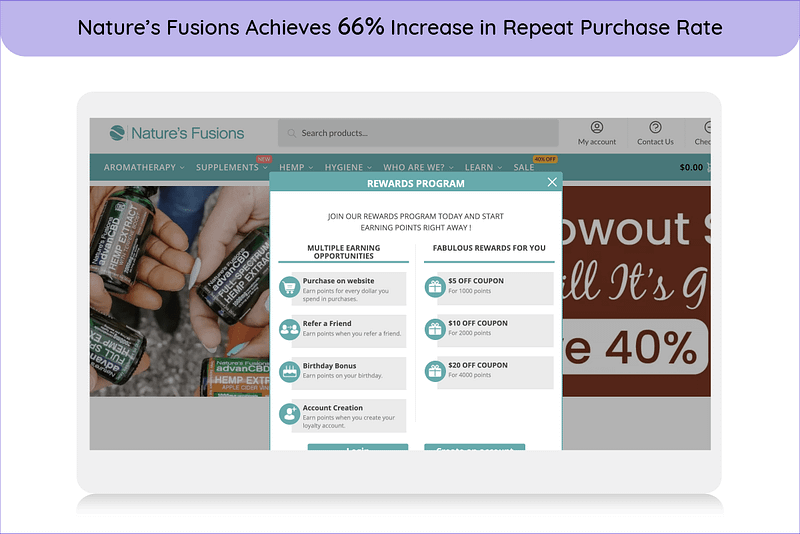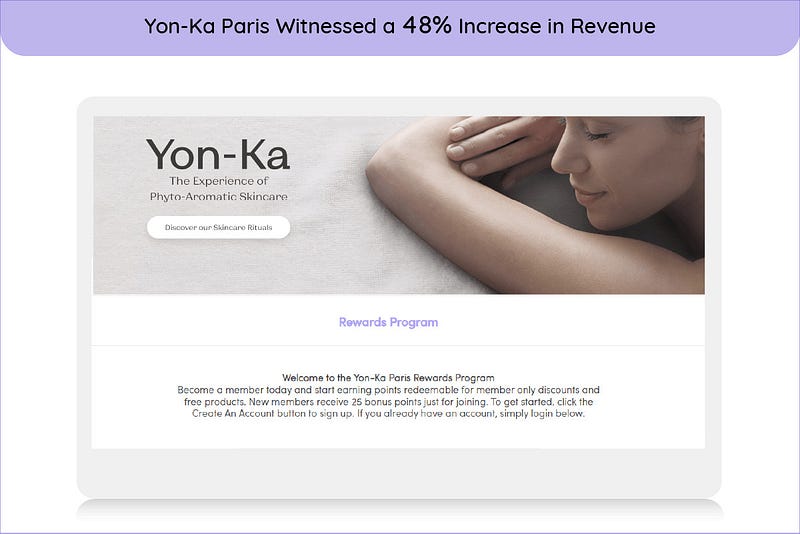views

The Beauty Industry has been growing at an incredible rate post-pandemic. As the industry grew from $483B in 2020 to $511B in 2021 — and at a compound annual growth rate of 4.75% worldwide — it is expected to surpass $716B by 2025. Some new brands have emerged as customers’ favorites amidst the pandemic because of the shifting priorities of the audience.
Even during the pandemic, some beauty brands found a way to capture users’ attention. Beauty rewards programs have been the reason behind the accelerated growth of these brands. It tells that customer retention has become the most crucial KPI amidst rising competitors.
Loyalty programs are a wonderful way to build customer loyalty and keep customers coming back for more. Depending on which loyalty platform your brand uses, you can increase repeat purchases, user acquisition rate, referral rates and push revenue to higher numbers.
Not only this, the personalization you deliver within loyalty programs has helped brands develop a unique identity in the market. It is helping them in better brand positioning and clear differentiation from the competition.
Biggest challenges faced by the beauty industry and ways to tackle them!
The market has been evolving all the time. But, the pandemic has accelerated the evolution. It created new challenges & demanded an upgraded user experience. Not just customers are spending more time on digital platforms. They are expecting advancement from brands too. Here are the top challenges:
1) Differentiation in the marketplace
Priorities and choices of customers have changed in recent years. Pandemic facilitated this process of change. It created a challenge to maintain a differentiated brand position in the market.
The success of Lancome Elite Rewards is due to its understanding of its target audience while staying true to its brand’s core values. In the process, they have optimized what matters to their customers and shaped their future in the industry.
2) Enhanced value
Days are gone when customers just want to buy a product seeing a celebrity endorsement. Beauty Brands must deliver a more engaging experience. Customers want to know about experiences from real people and not just celebrities.
Sephora launched a program, especially for beauty influencers as #SephoraSquad, and inspired real people to be part of it. Integrating the loyalty program with this campaign, Sephora gained popularity among millions of followers of every beauty influencer.

3) Changing Seasonalities
The next challenge is winning customers throughout the changing seasons. Customers have more information, and they do not want the same solutions for different problems. Brands need to consider every need as a separate problem and produce a unique solution. By creating seasonal options, brands have a chance of building year-round loyalty.
Liberty has launched products based on specific seasons. Their Autumn beauty refresh has attracted new users in a specific period of the year. Liberty also runs a loyalty reward program sending gifts to users 4 times a year. Getting gift cards at the start of a season ensures that more customers are shopping at that period.
4) Personalized Experiences
Users spend most of their time on social media these days. It has elevated the expectations of customers. Customers expect unique experiences and buying processes catered specifically to them.
Aveda Plus Rewards offers members greater benefits in a more personalized manner. To encourage more frequent redemption of rewards, they now offer members birthday gifts and free (or discounted) services.
5) Omni-Channel Experience
These challenges require brands to step up and deliver seamless integration across all touchpoints & channels — eCommerce, app stores, 3rd party channels & call centers.
Brands are collaborating to deliver the omnichannel experience. Target and Ulta Beauty collaborated to form “Ulta Beauty at Target”. It enables millions of guests to enjoy Ulta Beauty’s best-in-class beauty authority along with Target’s one-stop shopping experience.
A loyalty program is a perfect answer to these challenges!
Focus on ‘Organic Beauty Products’ has attracted new customers and created a buzz in the market. Brands are being loved for their social media actions, stand on cultural values like Saks Fifth Avenue, measures against animal cruelty like not testing on animals anymore like KVD Vegan Beauty, shifting from the conventional beauty standards, and making products within reach of all people, here, Dove with its #ShowUs campaign featuring photographs of “real women” stands out. CSR has also helped a few brands to increase customer acquisition rates.

Truly, as a beauty brand, you need to deliver a complete 360-degree experience for customers to ensure they stay connected with you. And unless you do this with an existing customer base that already has a strong relationship with your company, it’s going to be extremely challenging to achieve higher retention rates.
A practical example of this is Essence Royal’s implementation of loyalty rewards. They achieved 84% increased repeat purchase revenue within three months of implementing the loyalty program. Customers can earn points by referrals, account creation, sharing on Facebook, and purchases across a wide range of cosmetics. They were able to reduce discounts. Replace discounts with reward points promotions.

That’s just one example where Loyalty Programs have helped beauty brands boost their revenue amidst tough times.
Isn’t that what all beauty brands are trying to do? Making customers feel elated while using their products or engaging with the brand.
So, beauty loyalty programs are the enabler of sustainable growth and growing revenue.
Best loyalty program features to help your cosmetics and beauty company stand out
Customers love products they can trust, and they love brands delivering a personalized experience. Beauty is a cut-throat market, and customers can be swayed by marketers making the most of it. Loyalty programs have helped brands pass these hurdles and create a sustainable market position. Let’s uncover them briefly.
There are two types of loyalty programs:
1) Short term loyalty programs
Customers can earn wallet balances or discounts on a single purchase through these programs. Typically, customers get discounts, free products, or gift cards.
2) Long term loyalty programs
Long-term loyalty programs are a great way to keep your customers coming back. Providing rewards for frequent visits encourages customers to come back more often and spend more money. When designing a long-term loyalty program, there are a few things to keep in mind: communicating the benefits, focusing on data for decision-making, and high customization of the loyalty program. These crucial aspects can be covered when you find the perfect platform for your loyalty program. A platform that focuses on data-driven processes, an omnichannel approach, and gamification of loyalty programs can be a good fit. Nature’s Fusions increased the repeat purchase rate by 66% after the perfect implementation of the rewards program.

Inspiring loyalty programs for cosmetics and beauty brands
There have been breakthrough loyalty programs hitting the sweet spot. Not only were they able to increase the revenue, but they helped brands build a community of users. With correct messaging and targeting, beauty loyalty programs can deliver results at the right time.
KPS Essentials

KPS Essentials is a premium, organic skincare brand that strives to be performance-driven and charitable. The founders of the company founded the company on the principles of using performance to reshape the organic skincare industry and giving abundantly to causes close to their hearts.
They faced the challenge of improving Customer Retention and Increasing Repeat Purchase Revenue.
With a data-centric approach and customization in the loyalty platform chosen by KPS Essentials, they could connect with customers easily. Consequently, KPS Essentials increased repeat purchase revenue by 46% within three months.
Yon-Ka Paris

Yon-Ka Paris is a French skincare brand, pioneer, and leader in aromatherapy. They sell in the Business-to-Consumer (B2C) segment by targeting the beauty needs of an individual consumer.
They faced two major challenges- improving customer retention and increasing sales during slow months.
A modern-day loyalty rewards platform was implemented with the aim of improving customer retention, strengthening relationships with customers, and maximizing revenue for Yon-Ka Paris.
The brand was able to achieve its business objectives of increasing revenue and customer retention with the help of this loyalty program. The beauty brand saw increased revenue by 48%.
The race to retain more and more customers is getting tougher each day. The beauty market is booming, and it demands more attention from the brands having a tight hold on the customer’s base. Loyalty programs have proven their worth. Increasingly, beauty brands are taking advantage of loyalty programs. After all, every brand loves loyal customers.
This article was originally published on zinrelo.com












Facebook Conversations